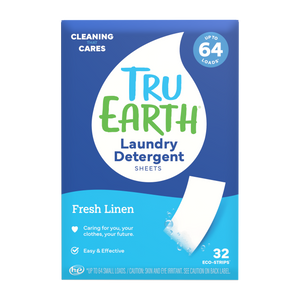This guide will explore the secrets of maintaining your throw pillows' cleanliness even if they lack removable covers. Throw pillows add a cozy touch to your living space, but when spills or stains occur, washing them can be a bit tricky.
In this detailed guide, we'll take a closer look at how to effectively wash throw pillows without removable covers, ensuring your home remains fresh and inviting.

Identifying the Fabric Type
Not all throw pillows are created equal. From cotton and linen to polyester and blends, the fabric type plays a key role in determining the suitable cleaning method.
Check the care tag or label on your pillows for information on the fabric composition and any recommended cleaning instructions.
Cotton and Linen Throw Pillows
If your throw pillows are cotton or linen, these natural fibers may be more prone to shrinking. Therefore, a gentle hand washing or spot cleaning approach may be advisable.
This prevents the fabric from losing its shape or becoming damaged during the washing process.
Polyester and Blends
Polyester or blended fabrics often offer more durability and can withstand machine washing. However, it's essential to check for any embellishments or decorations that may require special attention. Understanding the fabric type sets the foundation for an effective and safe cleaning routine.
Preparing Your Pillows for Washing
Once you've identified the fabric type, it's time to prepare your throw pillows for washing. Start by removing any decorative elements, like beads or sequins, that may be sensitive to water or detergents.
Checking for Stains and Pre-Treating
Before throwing your pillows into the washing machine, inspect them for stains. Pre-treat any spots with a suitable stain remover or a mixture of mild detergent and water. Gently blot the stained area, ensuring you don't spread the stain further.
Addressing Odors
If your throw pillows have absorbed odors, sprinkle baking soda on them before washing.
Baking soda acts as a natural deodorizer, absorbing unwanted smells and leaving your pillows smelling fresh. Let the baking soda sit for at least 15 minutes before proceeding with the washing process.
Choosing the Right Detergent
Choosing the right detergent plays a key role in maintaining the texture of your throw pillows. It's essential to opt for a gentle detergent that aligns with the fabric type, ensuring effective cleaning without compromising the integrity of the fibers.
Consider using a mild and eco-friendly option like Tru Earth's eco-strips detergent, known for its effectiveness in cleaning various fabrics while being environmentally conscious. Unlike harsh chemicals, Tru Earth's detergent is designed to preserve your pillows' quality, making it a wise choice for both cleanliness and sustainability.
Machine Washing vs. Hand Washing
The decision between machine washing and handwashing depends on the fabric type and the care instructions. Let's take a closer look at the following:
Machine Washing
For durable fabrics like polyester or blends, machine washing is generally a safe option. Use a gentle cycle with cold water and a mild detergent. Place the pillows in a mesh laundry bag to protect them from abrasion during the wash.
Handwashing
For delicate fabrics like cotton or linen, handwashing is often recommended. Fill a basin with cold water and add a small amount of mild detergent.
Gently agitate the water and submerge the pillows, using a soft cloth or sponge to clean them. Be mindful of the water temperature, as hot water may cause shrinking.
Rinsing and Drying
Once your throw pillows are cleaned, the rinsing and drying process becomes essential. Improper drying can lead to mold or damage the fabric, so let's explore the right techniques.
Rinsing
Thoroughly rinse your pillows to remove any lingering detergent. Ensure the water runs clear, indicating that all soap has been washed away. If handwashing, gently press out excess water without wringing the pillows.
Drying
When it comes to drying, air-drying is often the safest method. Lay your pillows flat on a clean, dry towel, reshaping them to their original form. Avoid direct sunlight, as it may cause fading, and ensure the pillows are completely dry before putting them back on your furniture.
Final Touches
The last step involves fluffing your throw pillows to restore their shape and plumpness. Gently shake and manipulate the pillows to distribute the filling evenly.
If they've lost some of their loft, consider adding extra filling or strategically manipulating the existing filling to revive their fullness.

A Fresh Start for Your Throw Pillows
Washing throw pillows without removable covers is a manageable task when prepared with the right knowledge and techniques. Understanding your pillows' fabric, pre-treating stains, choosing the correct detergent, and adopting the appropriate washing method are key factors in maintaining their freshness and prolonging their lifespan.
By incorporating these steps into your cleaning routine, you ensure that your throw pillows not only look their best but also contribute to a clean and inviting home ambiance.

